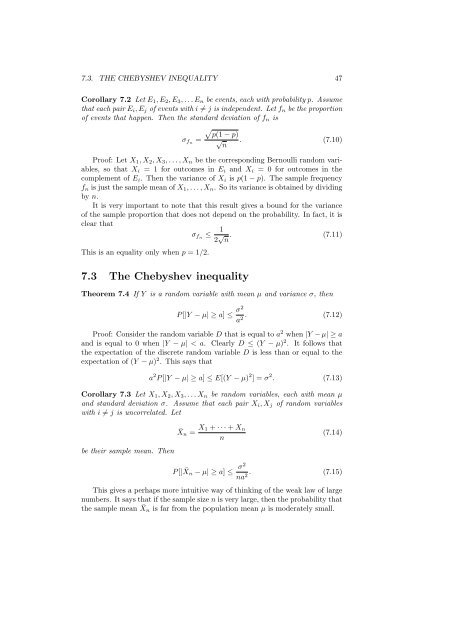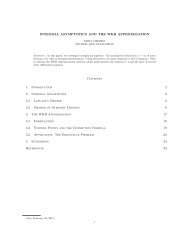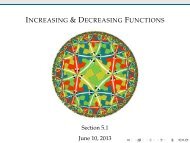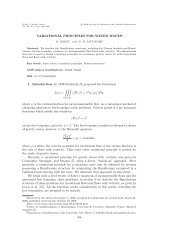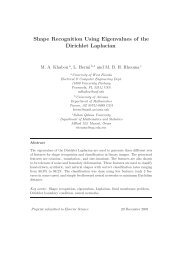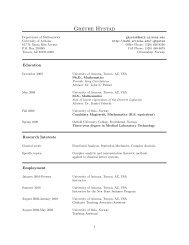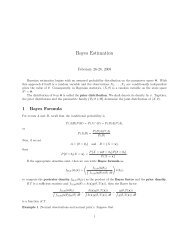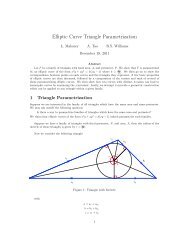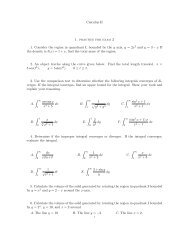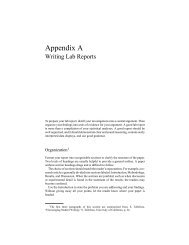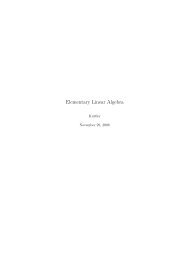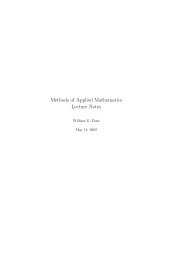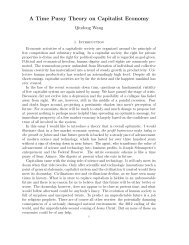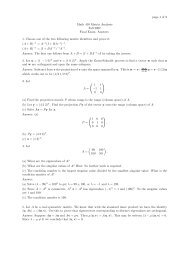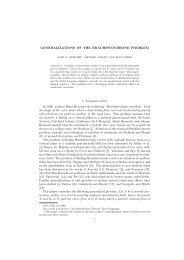Lectures on Elementary Probability
Lectures on Elementary Probability
Lectures on Elementary Probability
Create successful ePaper yourself
Turn your PDF publications into a flip-book with our unique Google optimized e-Paper software.
7.3. THE CHEBYSHEV INEQUALITY 47<br />
Corollary 7.2 Let E 1 , E 2 , E 3 , . . . E n be events, each with probability p. Assume<br />
that each pair E i , E j of events with i ≠ j is independent. Let f n be the proporti<strong>on</strong><br />
of events that happen. Then the standard deviati<strong>on</strong> of f n is<br />
√<br />
p(1 − p)<br />
σ fn = √ . (7.10)<br />
n<br />
Proof: Let X 1 , X 2 , X 3 , . . . , X n be the corresp<strong>on</strong>ding Bernoulli random variables,<br />
so that X i = 1 for outcomes in E i and X i = 0 for outcomes in the<br />
complement of E i . Then the variance of X i is p(1 − p). The sample frequency<br />
f n is just the sample mean of X 1 , . . . , X n . So its variance is obtained by dividing<br />
by n.<br />
It is very important to note that this result gives a bound for the variance<br />
of the sample proporti<strong>on</strong> that does not depend <strong>on</strong> the probability. In fact, it is<br />
clear that<br />
σ fn ≤ 1<br />
2 √ n . (7.11)<br />
This is an equality <strong>on</strong>ly when p = 1/2.<br />
7.3 The Chebyshev inequality<br />
Theorem 7.4 If Y is a random variable with mean µ and variance σ, then<br />
P [|Y − µ| ≥ a] ≤ σ2<br />
a 2 . (7.12)<br />
Proof: C<strong>on</strong>sider the random variable D that is equal to a 2 when |Y − µ| ≥ a<br />
and is equal to 0 when |Y − µ| < a. Clearly D ≤ (Y − µ) 2 . It follows that<br />
the expectati<strong>on</strong> of the discrete random variable D is less than or equal to the<br />
expectati<strong>on</strong> of (Y − µ) 2 . This says that<br />
a 2 P [|Y − µ| ≥ a] ≤ E[(Y − µ) 2 ] = σ 2 . (7.13)<br />
Corollary 7.3 Let X 1 , X 2 , X 3 , . . . X n be random variables, each with mean µ<br />
and standard deviati<strong>on</strong> σ. Assume that each pair X i , X j of random variables<br />
with i ≠ j is uncorrelated. Let<br />
be their sample mean. Then<br />
¯X n = X 1 + · · · + X n<br />
n<br />
(7.14)<br />
P [| ¯X n − µ| ≥ a] ≤ σ2<br />
na 2 . (7.15)<br />
This gives a perhaps more intuitive way of thinking of the weak law of large<br />
numbers. It says that if the sample size n is very large, then the probability that<br />
the sample mean ¯X n is far from the populati<strong>on</strong> mean µ is moderately small.


